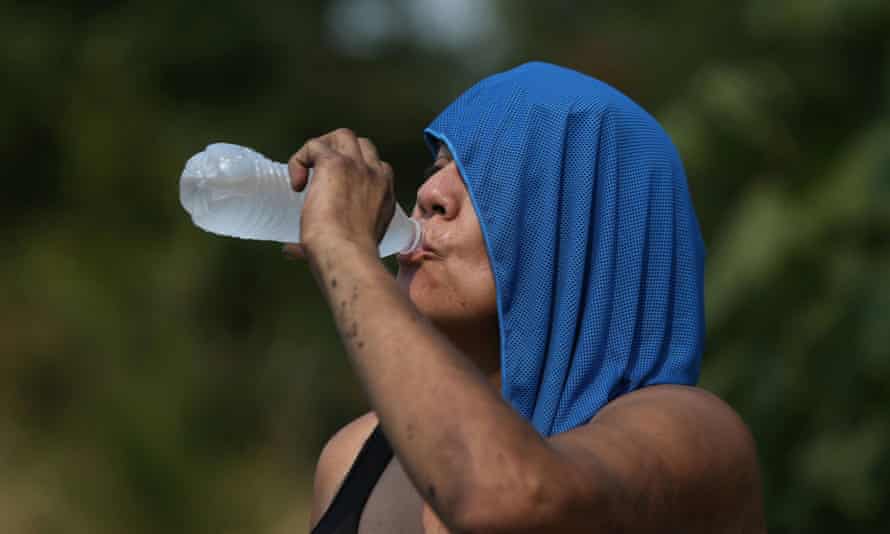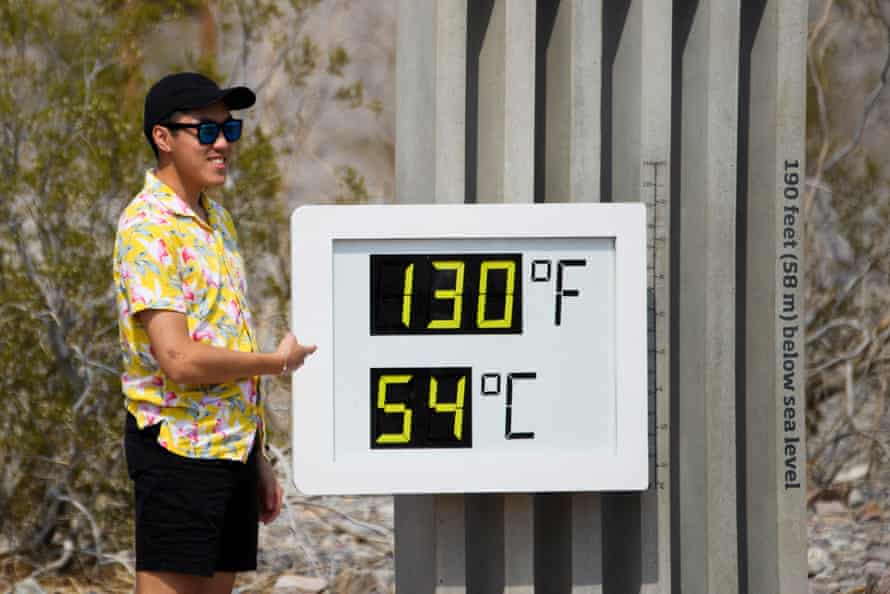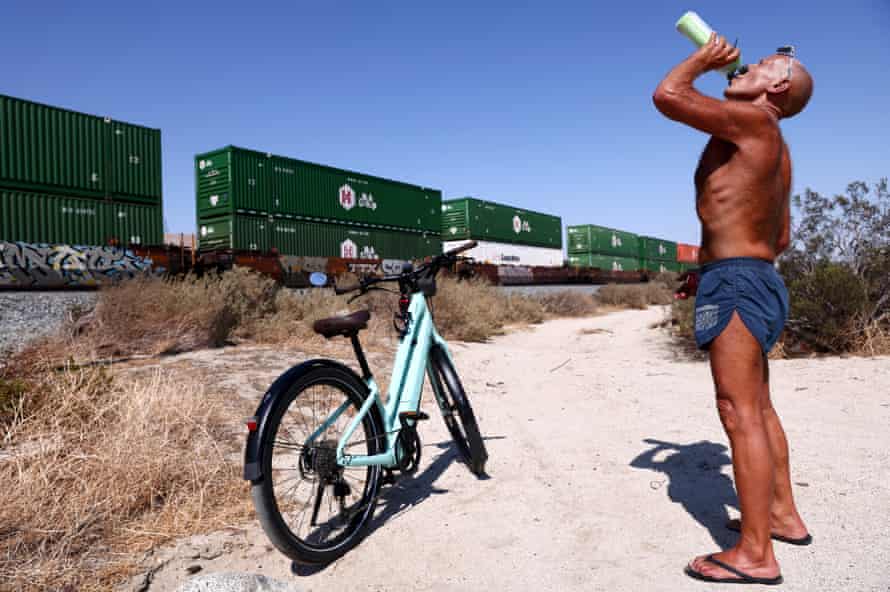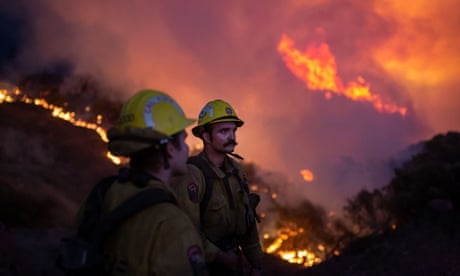Extract from The Guardian
California, Idaho, Nevada, Oregon and Utah faced historic heatwaves, which were made possible by human-caused global heating, a study found.

Last modified on Sat 11 Sep 2021 08.42 AEST
California experienced its hottest summer on record this year as the climate crisis caused deadly heatwaves and intense wildfires in the state and across the American west.
Idaho, Nevada, Oregon and Utah – totaling 18.4% of the contiguous US – also endured record hot summers, according to the National Oceanic and Atmospheric Administration. Sixteen other states recorded a top-five warmest summer.
Across the lower 48 states, the average temperature in June, July and August was 76F (24C), 2.6F (1.4C) above average, which slightly exceeds that of the Dust Bowl summer of 1936.

A thermometer display in Death Valley national park in California shows a temperature of 130F (54C) on 17 June. Photograph: Patrick T Fallon/AFP/Getty Images
The west faced historic heatwaves this summer, with cities across the typically cool Pacific north-west hitting their highest temperatures on record as a dome of high pressure extended from California through Canada in June. That early summer heatwave killed hundreds of people in Oregon and Washington, and nearly 500 people in Canada’s westernmost province. Experts warned the heat had probably also killed more than 1 billion marine animals along Canada’s Pacific coast.
Extreme heat in the region has accelerated and intensified drought conditions, and in California the rising temperatures have baked moisture out of the already dry landscape and increased the risks of wildfires. Last year, the state suffered its worst fire season ever, and this year is on track to outpace 2020 as huge blazes burn. Flames have destroyed more than 3,000 structures, killed one person and burned 2m acres, and there are still months left in the season.
“There is fire activity happening in California that we have never seen before. The critical thing for the public to know is evacuate early,” said Thom Porter, the Cal Fire chief, last month. “Every acre can and will burn someday in this state.”

Daryl Luppino takes a drink during his bike ride near Palm Springs, California, on 9 July. Photograph: Mario Tama/Getty Images
As extreme heat places greater demands on California’s power grid, the drought is hampering its ability to respond. Last month the state shut down a hydropower plant at Lake Oroville for the first time due to low water levels. The drought is forcing California to rely more on gas-fired plants, which could interfere with its efforts to transition to carbon-free electricity.
More sweltering temperatures hit the US west this week. The National Weather Service issued excessive heat warnings across the south-west and Arizona and Colorado faced record daily highs this week.
Meanwhile, California was facing more fire-friendly weather with hot, dry conditions and thunderstorms, which prompted officials to issue warnings in the north-east and Central Valley. There were 755 cloud-to-ground lightning strikes statewide from Thursday afternoon to Friday morning, the NWS said. The event did bring some rain, including in Lassen national park where firefighters are still battling the 950,000 acre Dixie fire, but far less than was needed, Cal Fire said.

No comments:
Post a Comment